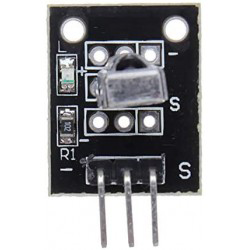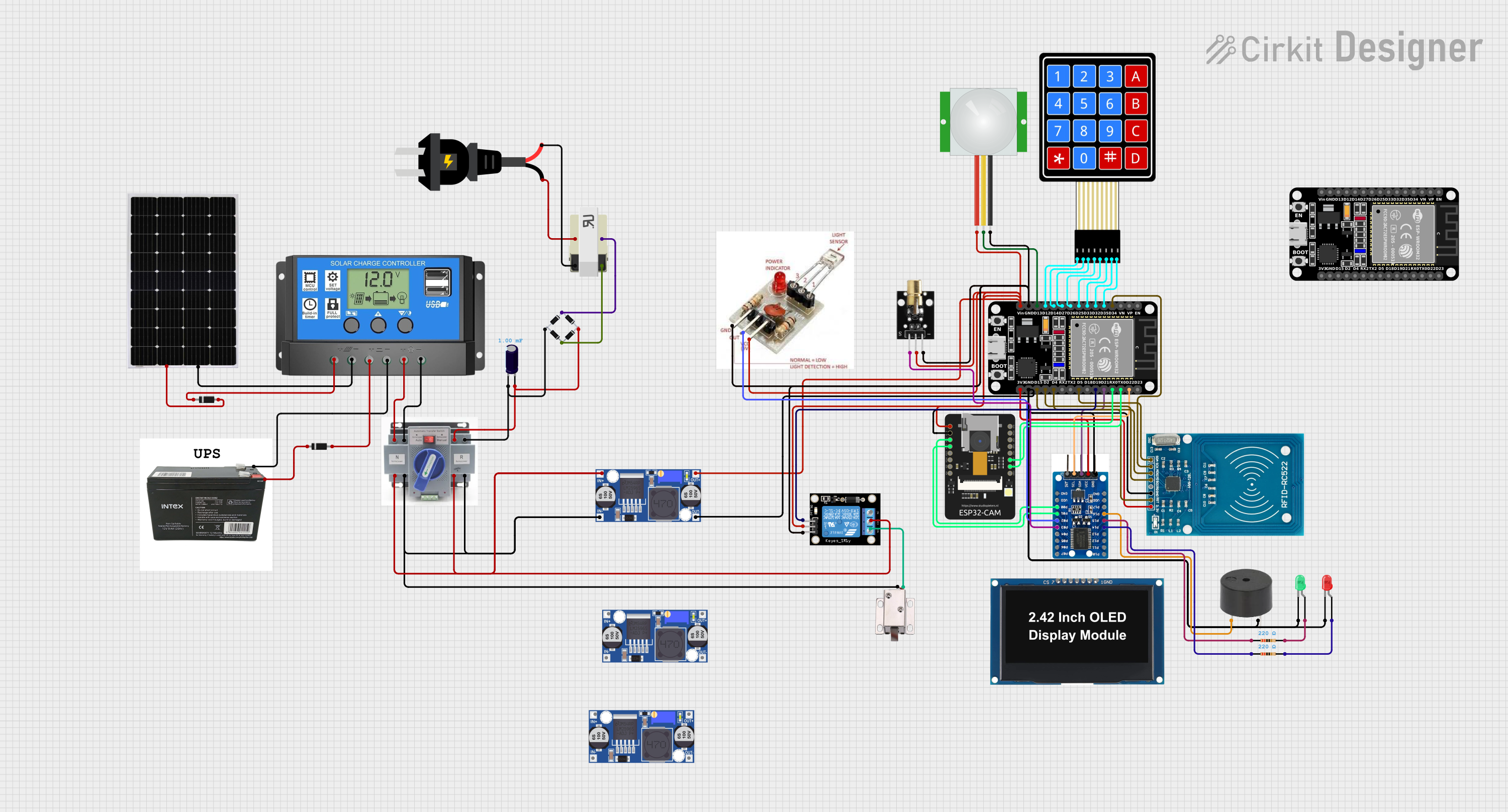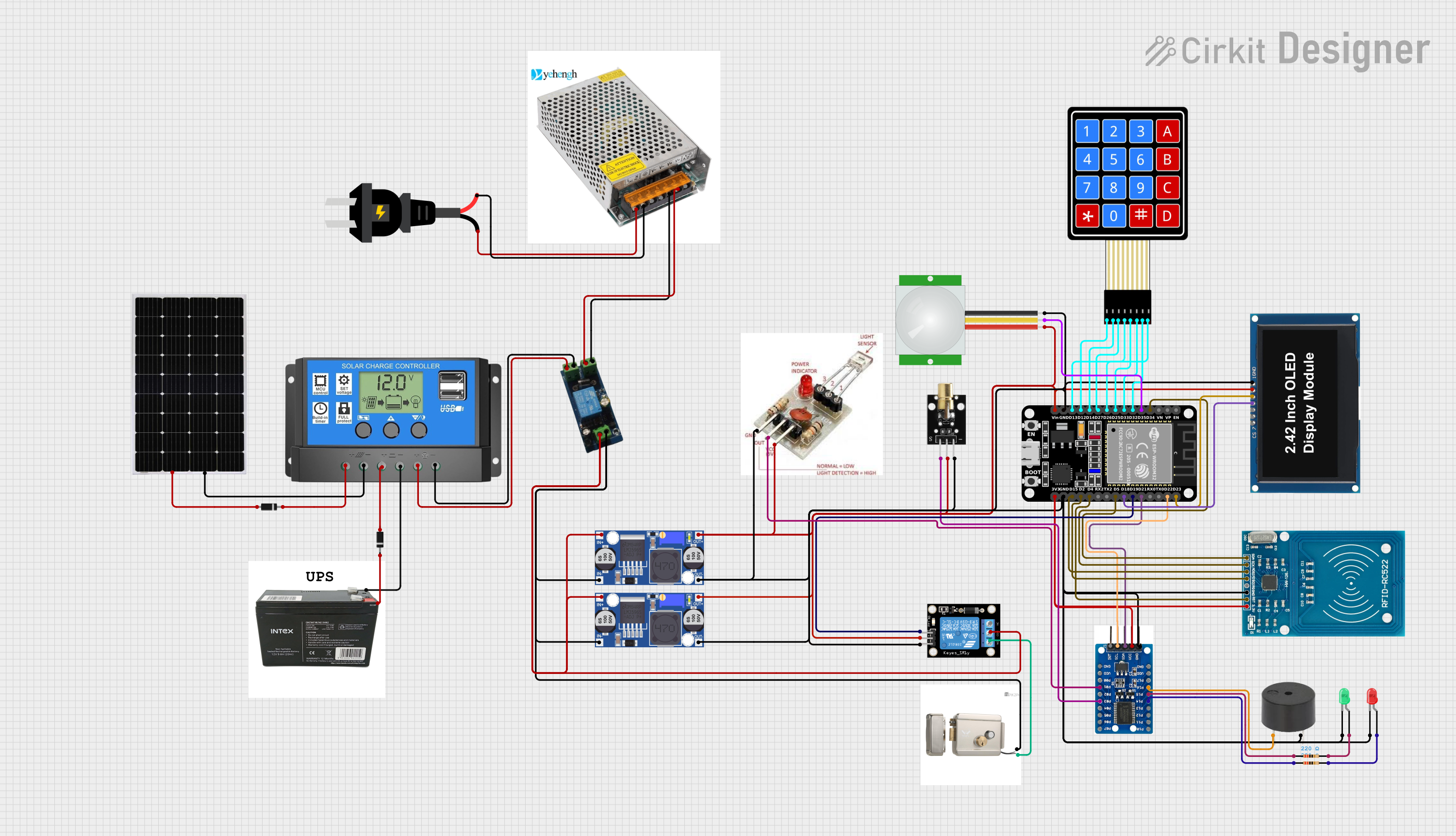
How to Use Ky-22: Examples, Pinouts, and Specs

 Design with Ky-22 in Cirkit Designer
Design with Ky-22 in Cirkit DesignerIntroduction
The Ky-22 is a relay module designed to control high-power loads using low-power signals. Manufactured under part ID "Uno," this component is widely used in automation, control systems, and other electronic applications requiring electrical isolation between control and load circuits. Its compact design and reliable switching capabilities make it a popular choice for hobbyists and professionals alike.
Explore Projects Built with Ky-22

 Open Project in Cirkit Designer
Open Project in Cirkit Designer
 Open Project in Cirkit Designer
Open Project in Cirkit Designer
 Open Project in Cirkit Designer
Open Project in Cirkit Designer
 Open Project in Cirkit Designer
Open Project in Cirkit DesignerExplore Projects Built with Ky-22

 Open Project in Cirkit Designer
Open Project in Cirkit Designer
 Open Project in Cirkit Designer
Open Project in Cirkit Designer
 Open Project in Cirkit Designer
Open Project in Cirkit Designer
 Open Project in Cirkit Designer
Open Project in Cirkit DesignerCommon Applications and Use Cases
- Home automation systems
- Industrial control systems
- Motor control circuits
- Smart appliances
- Robotics and IoT projects
Technical Specifications
The Ky-22 relay module is designed to operate efficiently in a variety of electronic circuits. Below are its key technical details:
Key Technical Details
- Operating Voltage: 5V DC
- Trigger Voltage: 3.3V to 5V DC
- Maximum Load Voltage: 250V AC or 30V DC
- Maximum Load Current: 10A
- Relay Type: SPDT (Single Pole Double Throw)
- Isolation: Optocoupler-based electrical isolation
- Dimensions: 32mm x 14mm x 18mm (approx.)
- Weight: ~10g
Pin Configuration and Descriptions
The Ky-22 relay module typically has 5 pins for input and output connections. Below is the pinout description:
| Pin Name | Type | Description |
|---|---|---|
| VCC | Power Input | Connect to a 5V DC power supply to power the relay module. |
| GND | Ground | Connect to the ground of the power supply or control circuit. |
| IN | Signal Input | Control pin to trigger the relay. Accepts 3.3V to 5V DC signals. |
| NO | Output | Normally Open terminal. Connect to the load for switching when the relay is ON. |
| COM | Output | Common terminal. Connect to the power source or load. |
| NC | Output | Normally Closed terminal. Connect to the load for switching when the relay is OFF. |
Usage Instructions
The Ky-22 relay module is straightforward to use in electronic circuits. Follow the steps below to integrate it into your project:
How to Use the Ky-22 in a Circuit
Power the Relay Module:
- Connect the
VCCpin to a 5V DC power supply. - Connect the
GNDpin to the ground of the power supply or control circuit.
- Connect the
Control the Relay:
- Connect the
INpin to a digital output pin of a microcontroller (e.g., Arduino UNO). - Send a HIGH signal (3.3V to 5V) to the
INpin to activate the relay and switch the load.
- Connect the
Connect the Load:
- Identify whether you want the load to be connected to the
NO(Normally Open) orNC(Normally Closed) terminal. - Connect the load to the appropriate terminal (
NOorNC) and theCOMterminal.
- Identify whether you want the load to be connected to the
Test the Circuit:
- Power the circuit and send control signals to the
INpin to toggle the relay state.
- Power the circuit and send control signals to the
Important Considerations and Best Practices
- Ensure the load voltage and current do not exceed the relay's maximum ratings (250V AC/30V DC, 10A).
- Use proper insulation and safety precautions when working with high-voltage loads.
- Avoid rapid switching of the relay to prevent wear and tear on the mechanical contacts.
- Use a flyback diode across the relay coil to protect the circuit from voltage spikes.
Example: Connecting Ky-22 to an Arduino UNO
Below is an example of how to control the Ky-22 relay module using an Arduino UNO:
// Example code to control the Ky-22 relay module with Arduino UNO
// Define the pin connected to the relay module's IN pin
const int relayPin = 7;
void setup() {
// Set the relay pin as an output
pinMode(relayPin, OUTPUT);
// Initialize the relay in the OFF state
digitalWrite(relayPin, LOW);
}
void loop() {
// Turn the relay ON
digitalWrite(relayPin, HIGH);
delay(1000); // Keep the relay ON for 1 second
// Turn the relay OFF
digitalWrite(relayPin, LOW);
delay(1000); // Keep the relay OFF for 1 second
}
Troubleshooting and FAQs
Common Issues and Solutions
Relay Not Switching:
- Cause: Insufficient voltage or current to the
INpin. - Solution: Ensure the control signal is between 3.3V and 5V DC.
- Cause: Insufficient voltage or current to the
Load Not Powering On:
- Cause: Incorrect wiring of the load to the relay terminals.
- Solution: Verify the load is connected to the correct terminals (
NOorNC) andCOM.
Relay Clicking Rapidly:
- Cause: Unstable control signal or noise in the circuit.
- Solution: Use a pull-down resistor on the
INpin to stabilize the signal.
Overheating Relay:
- Cause: Load exceeds the relay's maximum current rating.
- Solution: Ensure the load current is within the 10A limit.
FAQs
Q: Can the Ky-22 relay module be used with a 3.3V microcontroller?
A: Yes, theINpin can accept control signals as low as 3.3V DC.Q: Is the Ky-22 relay module suitable for switching DC loads?
A: Yes, it can switch DC loads up to 30V and 10A.Q: Does the Ky-22 provide electrical isolation?
A: Yes, it uses an optocoupler for electrical isolation between the control and load circuits.Q: Can I use the Ky-22 to control an AC motor?
A: Yes, as long as the motor's voltage and current are within the relay's maximum ratings (250V AC, 10A).